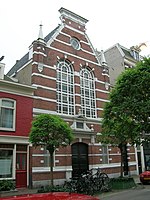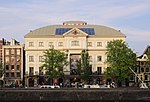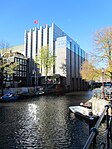De Nederlandsche Bank

De Nederlandsche Bank NV (DNB) is the central bank of the Netherlands. Founded by King William I in 1814, it is part of the European System of Central Banks (ESCB). De Nederlandsche Bank is a public limited company (Dutch: naamloze vennootschap, abbreviated NV) whose everyday policy is overseen by the Governing Board. Being a public limited company, DNB has a Supervisory Board (Dutch: Raad van Commissarissen). In addition, there is an advisory body called the Bank Council (Dutch: Bankraad). As a public entity the DNB has a function as both part of the European System of Central Banks (ESCB) and an independent public body (Dutch: zelfstandig bestuursorgaan). As a part of the ESCB, DNB is co-responsible for the determination and implementation of the monetary policy for the eurozone, besides being a link in the international payment system. As an independent public body, DNB exercises prudential supervision of financial institutions.
Excerpt from the Wikipedia article De Nederlandsche Bank (License: CC BY-SA 3.0, Authors, Images).De Nederlandsche Bank
Westeinde, Amsterdam Centrum
Geographical coordinates (GPS) Address External links Nearby Places Show on map
Geographical coordinates (GPS)
| Latitude | Longitude |
|---|---|
| N 52.358722222222 ° | E 4.9 ° |
Address
De Nederlandsche Bank
Westeinde
1017 ZN Amsterdam, Centrum
North Holland, Netherlands
Open on Google Maps










